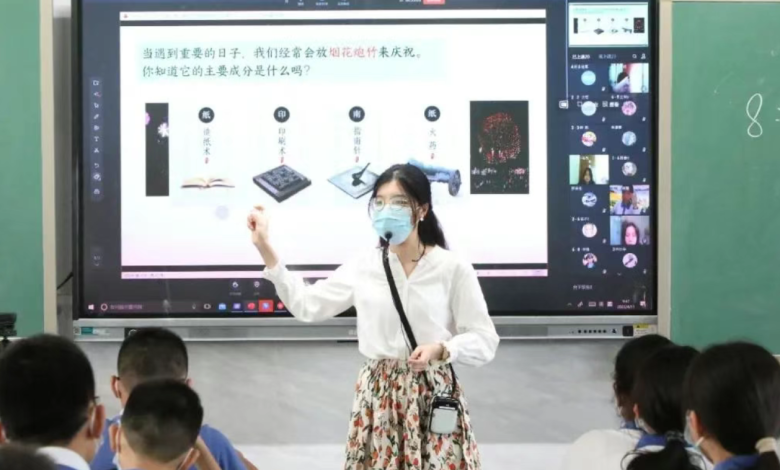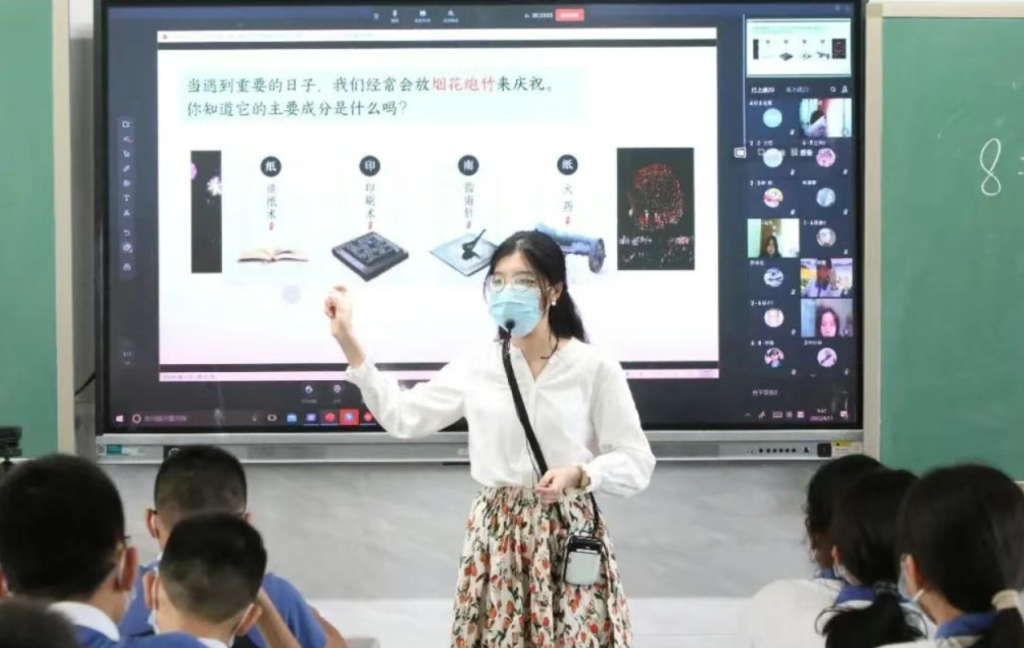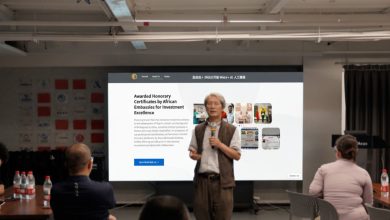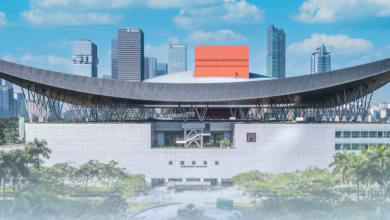
How Shenzhen is Shaping Smart Education in Schools
In recent years, China has made digital transformation a national priority. The 20th National Congress of the Communist Party emphasized a new digital strategy, highlighting education and technology as key pillars of socialist modernization. Shenzhen, one of China’s most innovative cities, has responded by launching a city-wide smart education plan. With smart boards, interactive displays, and AI-powered learning tools at the forefront, Shenzhen is setting a national example for how technology can reshape teaching and learning.

A Vision-Driven Strategy for Smart Education
Shenzhen’s journey began with the goal of becoming a “Pioneer Demonstration Zone” for educational excellence. Back in 2019, China’s State Council issued a directive encouraging Shenzhen to lead in educational reform. In response, the city released the “14th Five-Year Plan for Basic Education Informatization,” which introduced the concept of the “Pengjiao Smart Community”—a connected, data-driven ecosystem characterized by personalized teaching, scientific evaluation, and intelligent governance.
To make this vision a reality, the city is implementing four major initiatives:
- Digital Infrastructure: Dual coverage with fiber-optic networks and 5G enables high-speed access across schools.
- Smart Governance: Unified platforms allow for streamlined school management and education services.
- Talent Development: Every school is required to establish an IT center, and educators are trained as digital leaders.
- Intelligent Applications: From AI-assisted classrooms to smart assessment tools, technology is embedded in every layer of teaching.
Transforming Teaching and Learning with Smart Tools
One standout initiative is the Shenzhen Cloud School, the first “Internet+ platform-based” future school in China. It launched in 2021 as a hybrid of one central campus and multiple partner schools, using smart boards and interactive displays for dual-teacher online/offline teaching models.
The Cloud School has redefined traditional classrooms. Students participate in interactive sessions powered by AI and real-time data feedback, while teachers use integrated platforms for collaborative lesson planning, student diagnostics, and performance tracking. A recent survey showed over 95% of students enjoyed the smart classroom format, with satisfaction rates for core subjects exceeding 92%.
Additionally, Shenzhen has designated 100 experimental schools to co-develop new smart learning models. These schools are exploring AI-assisted deep learning, big data-powered teaching strategies, and cross-school personalized class grouping—leveraging technology to reduce teaching burdens and enhance learning outcomes.
Smart Boards and Interactive Displays at the Core
Technology hardware plays a crucial role in this transformation. Shenzhen-based smart board manufacturers like Ikinor and others have been instrumental in equipping classrooms with the latest in interactive display solutions. From 65” 4K touchscreens to AI-powered handwriting recognition, these devices support hybrid teaching, real-time feedback, and wireless screen sharing.
Many smart boards produced in Shenzhen feature multilingual support, making them ideal for schools serving diverse populations. Combined with custom software platforms, these boards enable personalized instruction, collaborative problem-solving, and virtual lab simulations—all aligned with China’s “Double Reduction” policy aimed at easing academic pressure.
Building a Smart Education Governance Model
Beyond classrooms, Shenzhen is revolutionizing how education is managed. The city has rolled out a “One-Network Governance” system that unifies data from schools, education bureaus, and government departments. By 2025, Shenzhen aims to establish over eight intelligent scenarios such as safety management, digital cafeteria systems, and student placement prediction—all supported by data dashboards and structural certificates.
A signature innovation is the “Pengjiao Index”, a data-driven metric system to measure education quality, resource distribution, and performance outcomes. This shift allows administrators to make evidence-based decisions and allocate resources with precision.
Talent Development: The Engine Behind Smart Education
To sustain its digital transformation, Shenzhen has launched a multi-tier talent development program. Over 600 school principals have completed CIO (Chief Information Officer) training. The city also runs the “Pioneer Teacher Program,” targeting young educators skilled in hybrid teaching and digital pedagogy.
Plans are underway to train:
- 30+ smart education leadership principals
- 100+ digital teaching experts
- 1,000+ smart teaching practitioners
- 10,000+ digitally skilled classroom teachers
These initiatives ensure that technology is not just adopted, but fully integrated by educators who can innovate within it.
National and International Collaboration
During the pandemic, Shenzhen developed a health data system for schools and implemented city-wide online teaching. It released official policies on blended learning and ensured no student was left behind. The city also established education resource platforms, allowing remote and under-resourced regions to benefit from Shenzhen’s advancements.
Shenzhen’s smart education reforms have even reached national strategies. It was one of the first cities to pilot industry-education integration, partnering with firms like Huawei and Tencent to create AI and cloud computing programs within schools. This collaboration equips students with skills needed for the future digital economy.
A New Era of Smart Education
Looking ahead, Shenzhen continues to scale its smart education model to the Greater Bay Area, forming partnerships with schools in Hong Kong and Macau. It’s building a cross-border Smart Education Innovation Research Institute, uniting future school leaders and smart teaching alliances.
By combining cutting-edge hardware like interactive displays and smart boards with AI-driven governance, personalized learning, and cross-industry collaboration, Shenzhen is offering a blueprint for the future of global education.
Whether you’re a policymaker, educator, or smart board manufacturer, Shenzhen’s approach offers inspiration on how to harness technology not only to improve learning, but to transform entire educational systems.





